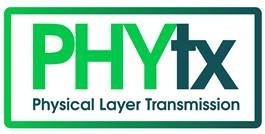Active Non-PS assigned Projects
WT/MD/SD# Projects Abstract Related Contributions Editors
This Study Document will analyze the multiplicity of use case categories gathering inputs from service providers and network operators.Active FANCE Projects
WT/MD/SD# FANCE Projects Abstract Related Contributions Editors WT-301i3 Architecture and Requirements for Fiber to the Distribution Point TBD WT-301 Aleksandra Kozarev SD-419 Use cases for extending fibre access over existing in-premises infrastructure SD-419 WT-419 Fiber access extension over existing copper infrastructure Provides use cases and fiber extension architectures with its elements as a generalization that does not preclude any type of technology or deployment approach. In the annexes these architectures are mapped to the specific technologies. WT-419
ID-337i3 This Internal Report is intended to provide a certification test plan for ITU‑T Recommendation G.9700 “Fast access to subscriber terminals (G.fast) – Power spectral density specification” and G.9701 “Fast access to subscriber terminals (G.fast) – Physical layer specification”. This IR-337 is specifically conceived for the basic interoperability objectives of the Broadband Forum G.fast Certification Program. Technical content in this test plan includes test setup information, equipment configuration requirements, test procedures, and pass/fail requirements for each test case. With short copper loops required by G.fast Distribution Point Units (DPUs) that push the deployment of the DPU/MDUs closer to the customer premise, local power and forward power may not be viable to cost or location. To power the DPU, power will come from the customer premises location over the copper pair; this is referred to as Reverse Power Feed (RPF). This document specifies tests for the RPF functions of a DPU and the customer premises’ Power Supply Equipment (PSE) either as a stand-alone device or as a function integrated in a G.fast Network Termination. Test cases are mainly specified with reference to ETSI TS 101 548 and BBF WT-301 requirements. Furthermore they are designed to ensure safe deployment of RPF equipment. This document applies only to the operational aspects of the certification program, such as: This document provides a performance test plan for ITU‑T Recommendation G.9701 “Fast access to subscriber terminals (G.fast) – Physical layer specification”. Since network architectures and deployment practices vary greatly among service providers, the network conditions (loop models, noise models, loop lengths, etc.) were selected to represent nominal conditions under which (interoperability) performance is tested. This test plan is focused on ensuring laboratory repeatability such that equipment from different vendors can be validated and compared.Active Gfast and RPF Projects
WT/MD/SD# Bonding Projects Abstract Related Contributions Editors G.fast Certification Test Plan ID-337 Frank Van der Putten OD-335 G.fast Interop Plugfest Test Plan Interoperability among multiple chipsets and systems will be critical to the success of G.fast. This document defines a suite of basic physical layer tests for G.fast. The intent is to provide a structure for vendor-to-vendor interoperability tests, known as "Plugfests". OD-335 WT-338i2 Reverse Power Feed (RPF) Test Plan WT-338 Aleksandra Kozarev OD-362 Program Requirements for G.fast Certification Program OD-362 Lincoln Lavoie WT-380 G.fast Performance Test Plan WT-380 Herman Verbueken
Completed or Inactive Project Streams
- These can be found on the PHYtx - Archived Project Streams and Projects page
